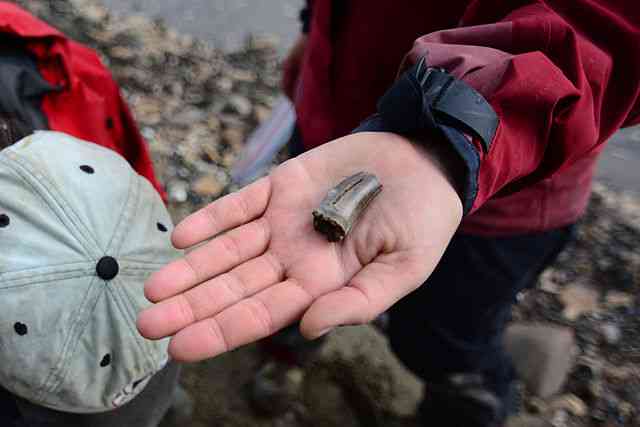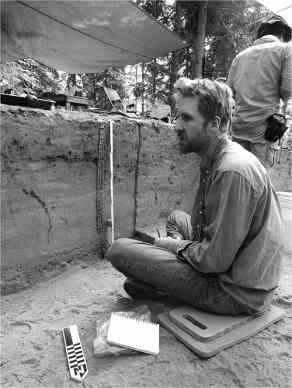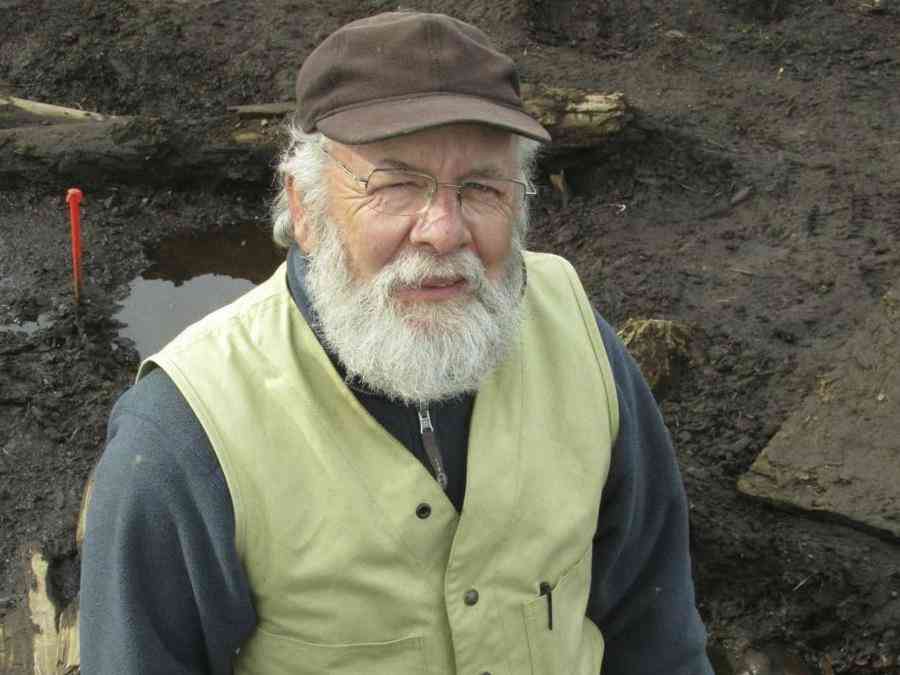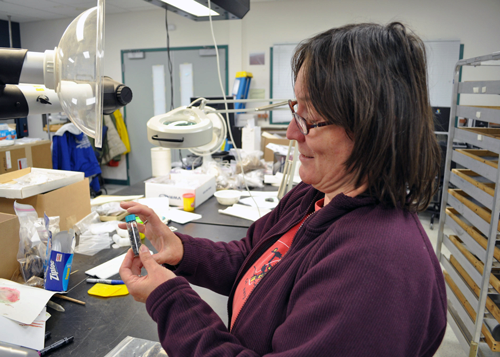
Climate change is destroying the historical record of Arctic peoples.
Archeologists are alarmed by the rapid deterioration of organic artifacts excavated in the Arctic. Those artifacts, made of materials like wood or animal hides, were until recently abundant at digs around the region, because they’d been preserved in permafrost or silty soils.
Josh Reuther opens the heavy door to the artifact repository at the University of Alaska Fairbanks’s Museum of the North. Reuther is a professor of archeology and a curator at the museum, where most of the artifacts excavated in Alaska are preserved.
“Everything’s climate-controlled — temperature and humidity,” he says as he thumbs through a drawer of plastic bags filled with artifacts excavated from St. Lawrence Island in the 1920s.

“Let’s see … harpoon heads; you can see toggles; you can see drilling implements …”
Reuther says over the past few years the museum has been getting more artifacts that are more deteriorated than those excavated decades ago.
He says that’s mostly due to climate change.
University of Toronto archeologist Max Friesen is working on a dig near the MacKenzie River Delta, in Canada’s Northwest Territories.
“It’s something that’s now a concern really around the entire circumpolar north,” Friesen says.
“It’s kind of a whole series of problems coming together at the same time to sort of create a perfect storm. You have the potential melting of the permafrost, you have sea level rise, you have in some cases changing weather patterns. It’s a very rich data base that’s being lost all across the Arctic.”

Rick Knecht, a professor of archeology at the University of Aberdeen in Scotland, agrees. He’s been working a dig near Quinhagak, in Southwestern Alaska.
“There’s so much information there that’s far away and beyond a conventional archeological site, which is just stones and bones,” Knecht said.
Anne Jensen is an archeologist and senior scientist for Ukpeagvik Inupiat Corp. who’s working at sites near Barrow, Alaska.

She says the threat to artifacts is growing, and that time is short for archeologists to recover them.
“We probably only have 20, 30 years to get this data, or it’s gone,” Jensen said.
The archeologists say more funding is needed to get as much work done as possible in the time remaining.
